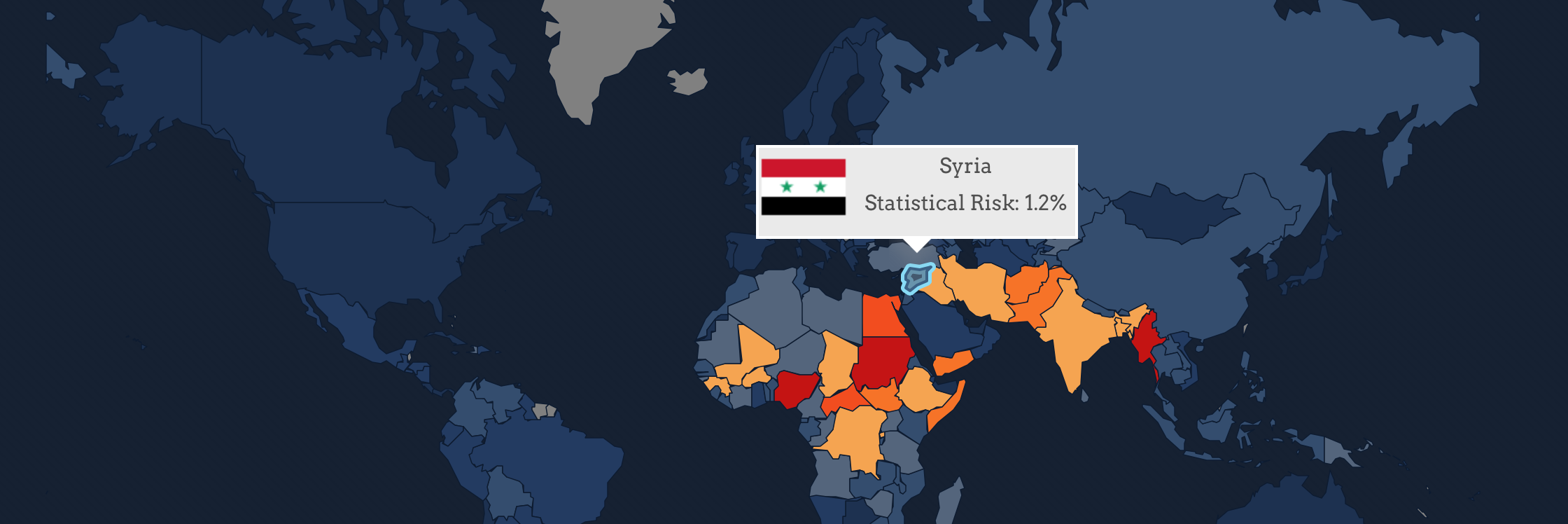September 23, 2015

Following our public launch a few days ago, a number of you have asked why Syria ranks so low in our statistical risk assessments. How can a country in which atrocities occur with horrifying frequency not leap to the top of those rankings?
First and most important, we recognize that state-led mass killing is already occurring in Syria and has been for the past few years. If we had designed our statistical analysis to assess the likely severity of mass atrocities in countries worldwide, Syria would be at or very near the top of the global list.
That’s not what our statistical models try to do, however. The Early Warning Project strives to support preventive action by drawing attention as early as possible to cases where mass atrocities aren’t already happening, but the risk of their occurrence is relatively high. To do that, we’ve chosen to train our statistical models to look for the onset of mass-killing episodes instead of their continuation or escalation. In cases where mass atrocities are already occurring, it’s too late for early warning, and witnessing and mitigation are the tasks at hand. So, instead of trying to anticipate the dynamics of ongoing episodes of state-led mass killing, we turn our lens on the conditions that might give rise to new ones.
In light of that strategy, you might wonder why Syria—and Sudan, and Egypt, and any other country with an ongoing episode of state-led mass killing—is on the list at all. Because mass-killing episodes are defined by their perpetrators and their targets, states can experience more than one at a time. A case in point is Sudan, where attacks in recent years on civilians in Darfur and the South Kordofan region have produced distinct episodes of mass killing, both of which continue today.
In countries like Sudan and Syria where an episode of state-led mass killing is already occurring, our statistical models assess the risk that an episode involving a new target group will begin, even as the ongoing episode(s) persist or perhaps end. In Sudan, for example, the central government could respond to civil unrest in the capital or separatist agitation in the east with atrocities that would snowball into yet-another episode of state-led mass killing. It’s harder to imagine a similar scenario in Syria, where virtually every communal group or political faction in the country is already on one side or the other of the civil war. If the current regime is overthrown and replaced, however, then its successor could engage in mass atrocities of its own, and that violence could swell into a new episode of state-led mass killing. (Unfortunately, this scenario is not uncommon.)
As it happens, our models indicate that the risk of a new and different episode of state-led mass killing beginning in Syria this year is low in absolute terms, but not so low in relative ones. Syria lands in the 28th spot on our global risk list, which puts it among the worst 20 percent worldwide. As the bar chart below and on the Syria country page shows:
- Syria scores poorly on the “bad regime” model, which takes into account its prior (and, in this case, ongoing) mass-killing episodes and the political salience of the ruling elite’s ethnicity, among other things.
- By contrast, Syria looks less risky to our “elite threat” model, which focuses on the risk of a coup attempt or onset of (another) insurgency as events that might trigger a new episode of state-led mass killing. Here, Syria’s relative wealth, its dictatorial regime, and the absence of any coup attempts in the past several years make it appear less risky than very poor countries, countries with mixed political regimes, and countries such as Egypt and Burkina Faso that have recently experienced coups.
- Finally, Syria scores poorly on our machine-learning algorithm, Random Forests, which considers all of the variables in both the “bad regime” and the “elite threat” model. With this method, we can’t parse the data to say which inputs drive that result, but we know from the historical data that its forecasts are generally a bit more accurate than the ones from either of the theory-specific models.
